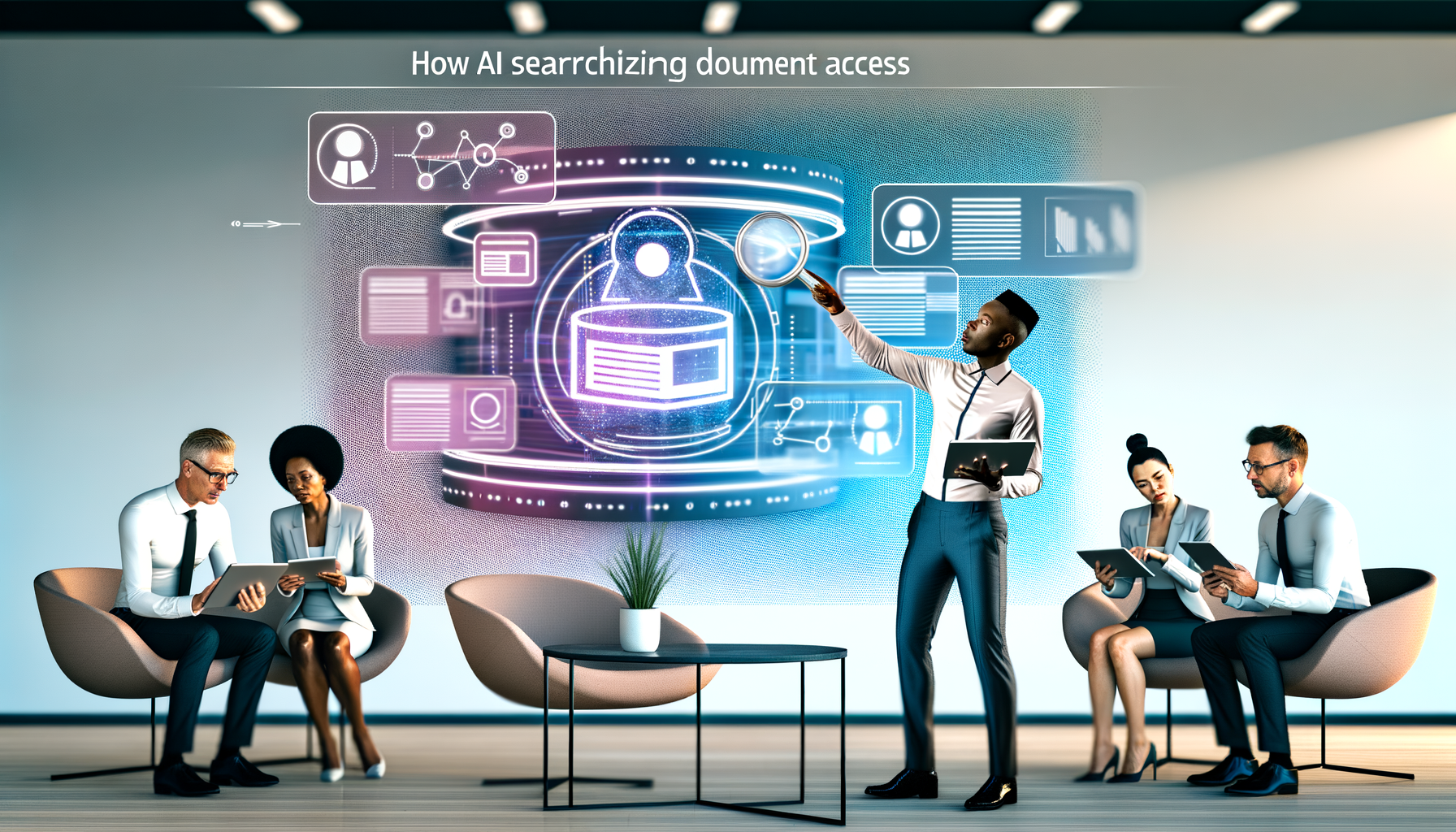
How to Pitch SaaS Products to Government Clients
Pursuing government clients as a SaaS provider can be incredibly rewarding yet challenging. Government agencies need robust, scalable solutions that align with their unique requirements, from compliance to long-term viability. Successfully pitching SaaS products to the public sector requires a well-thought-out strategy, as government sales are vastly different from B2B transactions. In this article, I’ll share insights and strategies from my years in the trenches with Foundercrate on unlocking the B2G Sales blueprint for selling SaaS products to government clients.
Understanding the Unique Needs of Government SaaS
From my experience, the first step in pitching to government clients is understanding that their needs are distinct from those of private businesses. Government agencies work under stricter regulatory frameworks and have unique budgetary cycles.
- Compliance and Security: Government clients prioritize robust compliance and security measures. Demonstrating that your SaaS product meets or exceeds these requirements is vital for building trust.
- Budget Alignment: Government agencies operate on public funds with specific fiscal year cycles. It helps to present a pricing structure that meshes with their budgeting processes.
By tailoring your pitch to address these unique aspects, you can better align your product’s features with what these agencies value most.
Building Relationships and Trust in B2G Sales
In government sales, relationships are currency. Establishing trust with key stakeholders is non-negotiable, as agencies often prefer to engage with known entities.
Start by networking through industry events and webinars focused on the public sector. I’ve found that speaking opportunities or participation in panels can significantly boost credibility. Ensure that your online presence, such as LinkedIn profiles and website testimonials, showcases past successes, preferably within the government sector.
Navigating Public Procurement and Compliance
Public procurement processes are often daunting due to bureaucratic layers. Navigating them successfully entails:
- Understanding Procurement Portals: Governments often have specific websites or platforms where requests for proposals (RFPs) are posted. Regularly check these portals to identify potential opportunities.
- Mastering the Art of Proposal Writing: Preparing a compelling proposal is imperative. Your document should not only meet the outlined requirements but also demonstrate your SaaS product’s unique value proposition.
By respecting these processes and presenting thorough, tailored proposals, you stand a better chance of making it through the layers of decision-making.
Highlighting Unique Value Propositions of Your SaaS
One common pitfall I’ve witnessed is assuming that the technical specifications of a SaaS product alone will win the contract. Government clients are more interested in how your solutions can improve efficiency, reduce costs, or enhance their public service delivery.
Here’s how you can emphasize your unique value:
- Customization: Stress how your solution is adaptable to the specific needs of the agency.
- Case Studies: Provide evidence from past implementations that demonstrate success metrics and client satisfaction.
- Longevity and Support: Offer insights into your reliable customer support and commitment to software updates and improvements.
These elements help articulate why choosing your SaaS solution adds more long-term value compared to alternatives.
Addressing Challenges and Mitigating Risk
Governments are naturally risk-averse entities. From my experience, it’s imperative to proactively address perceived risks within your SaaS offering.
Demonstrate robust risk mitigation strategies in your proposals. Highlight service level agreements (SLAs) that guarantee uptime and support. Transparency about data security protocols will also strengthen your position, illustrating how your infrastructure minimizes risks of data breaches.
Conclusion: The Long Game
While pitching SaaS products to government clients can be a tedious and lengthy process, the potential rewards are substantial. When you build strong, lasting relationships, understand compliance intricacies, and can articulate your SaaS product’s unique benefits clearly, your solutions gain a competitive edge in the public sector.
For more insights on navigating the complex landscape of B2G sales, follow my journey with Foundercrate, as we continue to innovate across industries. Remember, this is a marathon, not a sprint, and persistence paired with strategic planning is key to cracking the government market.

Breaking SaaS Silos: Why Integrated Workflows Matter
Introduction
In today’s rapidly evolving business landscape, it’s not uncommon for companies to juggle multiple software-as-a-service (SaaS) solutions, each addressing unique departmental needs. With the proliferation of digital tools, the struggle to manage fragmented workflows can result in inefficiencies that hamper productivity. This is where the magic of SaaS integration and workflow automation comes into play, offering the transformative power to streamline operations across departments. Let me guide you through the journey of breaking down these SaaS silos and unveil the real business value of seamless integration.
The Challenge of SaaS Silos
In my experience working across various startups, the prevalence of departmental silos has been a recurrent theme. Departments often operate in isolation, each utilizing different software solutions tailored to their specific functions. While these tools are individually effective, they often lack interconnectivity, leading to communication breakdowns and workflow disruptions.
For instance, a marketing team might rely on one CRM system, while sales prefer another. The burden of manually transferring data between these platforms hampers operational efficiency and increases the likelihood of errors. Without SaaS integration, vital information often gets lost in translation, and not to mention, it eats up valuable time that could be redirected towards innovation and growth.
The Case for Integrated Workflows
The first step towards boosting operational efficiency is recognizing the need for a cohesive ecosystem where all tools work harmoniously. Integrated workflows facilitated by SaaS integration bridge these gaps by enabling seamless data flow across different applications.
With workflow automation, repetitive tasks that once required significant manual effort are streamlined, allowing teams to focus on strategic initiatives rather than administrative burdens. Let me share a real-life example: At one of my ventures, we employed RecordsKeeper.AI to automate data collection and reporting processes, significantly freeing up resources and expediting decision-making processes. This change not only improved accuracy but also fostered collaboration, as teams could now easily access and interpret shared data. That’s the beauty of leveraging advanced integration solutions.
Benefits of SaaS Integration and Workflow Automation
- Enhanced Efficiency: By integrating your SaaS platforms, you eliminate redundant tasks, speeding up workflows and enhancing overall productivity.
- Accuracy and Consistency: Automation reduces human error, ensuring that data remains consistent across all platforms.
- Improved Team Collaboration: With integrated workflows, teams have access to the same data, fostering transparency and collaboration.
- Cost Savings: Reducing manual labor not only saves time but also cuts costs associated with extended project timelines.
Implementing RecordsKeeper.AI for Optimal Results
Based on my extensive experience working with numerous SaaS operations, adopting a robust tool like RecordsKeeper.AI can dramatically improve how your workflows are managed. This AI-powered integration platform is designed to support multi-platform connections, delivering real-time data updates and ensuring comprehensive visibility across all departments.
With its intuitive dashboard, RecordsKeeper.AI allows configuration of customized workflows with minimal coding knowledge. The platform’s analytics provide actionable insights, identifying areas for improvement and enabling data-driven decision-making across the organization.
Steps to Successful SaaS Integration
Embarking on your integration journey can seem daunting, but by following these steps, you can set your organization up for success:
- Evaluate Current Systems: Assess all existing platforms and identify integration capabilities.
- Select the Right Tools: Choose an integration platform such as RecordsKeeper.AI that aligns with your business goals.
- Design Interconnected Workflows: Map out how data should flow between departments to eliminate silos.
- Train Your Teams: Ensure team members understand new processes and the benefits of automation.
- Monitor and Optimize: Regularly review integration performance and adjust as needed for maximum efficiency.
Conclusion
Breaking out of SaaS silos is no longer a choice but a necessity for businesses striving to stay competitive in a tech-driven world. By embracing SaaS integration and harnessing the potential of workflow automation, companies can unlock untapped efficiencies and foster a more collaborative work environment. If you’re keen to elevate your operations, I heartily suggest exploring how tools like RecordsKeeper.AI can integrate your workflows and drive your business success. Stay connected for more insights and strategies in the SaaS and startup landscapes. Together, let’s revolutionize how we work.

Teaching Blockchain Before It Was Cool: Lessons from 2017
It was the year 2017, and the buzzword on everyone’s lips was “blockchain.” Yet, few truly grasped what this technology entailed and how it could revolutionize industries. As an entrepreneur and technologist, I recognized a massive gap in understanding and decided to dive into the world of blockchain education. Fast forward to today, the journey of teaching blockchain during its nascent stages has become a cornerstone of my experience and played a vital role in shaping my future ventures.
The Early Days of Blockchain: A Mystery Yet to Be Solved
Back in 2017, blockchain was akin to the Wild West—exciting, untamed, and full of opportunities. But it was also surrounded by skepticism and a lack of clear information. The general populace viewed it merely as the technology underpinning Bitcoin, without comprehending its vast potential and versatility across various sectors. This challenge intrigued me. Could I make blockchain understandable for everyone, from tech enthusiasts to business moguls?
The Challenge of Early Adoption in Education
Teaching blockchain before it became a staple topic involved more than just explaining distributed ledgers. It meant breaking down complex concepts into digestible pieces without losing the technology’s essence. I had to create a curriculum that addressed the burgeoning questions: What is blockchain? How does it work? Why should industries care?
It was akin to navigating uncharted territory. Each class was a blend of structured learning and spontaneous exploration. From crafting detailed illustrations of how blockchain secured and decentralized data, to engaging debates on its societal impact, the aim was to demystify blockchain and spark a keen interest in innovation.
Transformative Lessons: Shaping Future Ventures
The initiative to educate others while blockchain was in its infancy taught me several invaluable lessons that now underpin my ventures:
- Patience is Key: Teaching technology that most people haven’t yet warmed up to requires enduring patience and perseverance. It taught me to cultivate a passion for learning and sharing knowledge, even when faced with skepticism or disinterest.
- Adaptability: The world of blockchain and tech, in general, is ever-evolving. Staying adaptable and open to learning from failures and successes alike allowed me to iterate my teaching methods and improve my entrepreneurial strategies.
- Community Building: Building a community around a nascent technology can significantly accelerate learning and adoption. These communities became a vibrant ecosystem of innovation, now instrumental in driving my startup’s growth.
Teaching Strategies: Bridging the Knowledge Gap
To effectively reach audiences from different backgrounds, it was imperative to employ diverse teaching strategies:
- Utilizing real-world applications to illustrate blockchain’s benefits beyond cryptocurrencies.
- Incorporating engaging storytelling about blockchain origins and pioneers that captured imaginations and inspired action.
- Creating interactive workshops that empowered individuals to witness blockchain in action.
Looking Forward: Blockchain Beyond Education
Today, blockchain is no longer a fragmented tech concept but, rather, a foundational technology influencing industries worldwide. The lessons I learned from early teaching directly contribute to my confidence and creativity in founding ventures that leverage cutting-edge technology.
As the founder of Foundercrate, I bring the same passion and commitment to fostering innovation and entrepreneurship. By nurturing an environment where learning and evolving with technology is at the core, I aim to empower the next generation of entrepreneurs.
Conclusion: A Call to Innovators
Reflecting on my journey from teaching blockchain in 2017 to today, I’m reminded of the incredible pace of technological growth and the power of education in driving this transformation. If you’re an entrepreneur or a tech enthusiast keen on exploring emerging technologies, I invite you to join me on this exciting journey. At Foundercrate, we believe that education and innovation go hand-in-hand to create the future we envision.

Teaching Blockchain Before It Was Cool: Lessons from 2017
As I reflect on my journey with blockchain, it takes me back to 2017, a time when the concept was still mostly unexplored territory. Many saw blockchain as a cryptic technology reserved solely for Bitcoin enthusiasts. It was during these nascent days that I embarked on teaching blockchain, a decision that profoundly influenced my trajectory as an entrepreneur and educator.
The Early Days of Blockchain Education
Picture this: It’s 2017, and blockchain is on the cusp of becoming a buzzword. Yet, there is a noticeable gap between the technology’s potential and the public’s understanding of it. I noticed the vast potential blockchain held for transforming various sectors—finance, healthcare, supply chain, to name a few. However, the barriers to entry for understanding blockchain were high. Many professionals and students struggled to find resources that elucidated blockchain in an accessible and digestible manner.
This gap presented an opportunity—one that I was eager to fill. I decided to leverage my understanding and passion for this emerging technology by creating comprehensive educational resources. My goal was to break down complex blockchain concepts into easily understandable segments, allowing others to see blockchain’s potential as I did.
Creating a Curriculum for a New Era
Crafting a curriculum around blockchain and its applications was both challenging and rewarding. The challenges lay in simplifying a technology that was inherently complex and, at times, misunderstood by those outside the tech community. Yet, the reward was witnessing lightbulb moments as learners began to grasp the foundational principles of blockchain.
To ensure the curriculum was impactful, I focused on several key areas:
- Simplifying the Complex: Using analogies and real-world examples helped demystify how blockchain functions beyond cryptocurrencies.
- Hands-On Learning: Encouraging students to engage in practical exercises emphasized the application of blockchain in real-world scenarios.
- Staying Current: Since blockchain is rapidly evolving, updating course materials frequently ensured learners stayed abreast of the latest developments.
Lessons Learned from Early Adoption
Teaching blockchain before it was mainstream offered several learning opportunities. Firstly, I discovered the power of early adoption. Embracing new technologies ahead of the curve can position one as a pioneer, leading to unforeseen opportunities and growth.
Another key lesson was the importance of education in technology adoption. Success isn’t just about creating new solutions but ensuring those solutions are comprehensible and applicable to the intended audience. Education empowers users, turning intriguing technologies into everyday tools that drive innovation and efficiency.
Moreover, teaching blockchain enhanced my entrepreneurial toolkit. It forced me to navigate uncharted waters, constantly adapt, and remain receptive to feedback. This adaptability has been pivotal in shaping my subsequent ventures, including Foundercrate.
Blockchain and Beyond: Shaping the Future
Today, blockchain’s impact is palpable in numerous sectors. Its promise extends beyond cryptocurrencies, showcasing its potential to revolutionize how industries operate. Reflecting on my early experiences in blockchain education, I’m continually inspired by the strides we’ve made.
My journey with blockchain has been a catalyst for continuous learning and exploration. It set the foundation for my ventures and solidified my belief in the power of embracing innovation. Whether you’re an entrepreneur, a student, or an enthusiast, I urge you to remain curious and open-minded.
Stay Ahead with Constant Learning
In the fast-paced world of technology, staying ahead means embracing change and continually expanding one’s knowledge. Whether it’s blockchain or the next revolutionary tech, education remains a key driver of progress.
I invite you to explore blockchain’s vast potential further, and if you’re passionate about innovation, consider how early adoption can shape your entrepreneurial journey. Stay connected with me and follow along as we delve into the myriad of possibilities that technology holds for our future.

How to Close SaaS Deals with Compliance-First Buyers
In the ever-evolving landscape of Software as a Service (SaaS) sales, working with compliance-first buyers — particularly large enterprises — presents unique challenges and opportunities. Having navigated these waters myself, I’ve come to appreciate the delicate balance required to meet rigorous compliance standards while pushing the envelope on innovation. Achieving success in this domain requires a fine-tuned approach, where each component of the sales pitch prioritizes compliance considerations alongside product excellence.
Understanding the Compliance Landscape
Understanding the compliance environment is the foundation of any successful SaaS sales strategy when dealing with enterprise clients. Compliance regulations vary significantly by industry, geography, and even company size. From data protection laws like GDPR in Europe to sector-specific regulations such as HIPAA in healthcare, the landscape is extensive and complex.
In my experience, preparing an informed overview of relevant regulations and demonstrating awareness of these during your pitch establishes immediate credibility. It’s about signalling that you recognize the stakes involved for their business continuity and reputation. Having a dedicated compliance officer or specialist who can speak to these issues in depth is often helpful, if not essential.
Aligning Your Solution with Compliance Needs
Once you’ve grasped the compliance terrain, the next step is to align your solution’s capabilities with those needs. Enterprise clients want assurances that your product will not only meet their operational needs but also safeguard them against regulatory scrutiny.
Here are some pivotal strategies:
- Compliance-Ready Features: Highlight features that facilitate compliance, like secure data encryption, audit logs, and user access controls. Demonstrating these features in action provides tangible evidence of how your software supports their compliance requirements.
- Customizable Compliance Settings: Offer the ability to tailor the compliance settings to meet varied regulations, showcasing adaptability to different enterprise environments and regulatory frameworks.
- Transparent Data Practices: Emphasize your commitment to data privacy and transparency in data management practices. Provide documentation that clearly outlines how data is collected, stored, and processed.
Building Trust through Documentation and Certifications
For SaaS solutions, documentation and third-party verifications such as certifications can serve as powerful tools to build trust with compliance-first buyers.
Consider providing:
- Comprehensive Compliance Documentation: This includes data protection impact assessments, security policies, and compliance checklists that prove your solution adheres to relevant standards.
- Third-Party Audits and Certifications: ISO 27001, SOC 2, and other certifications can vouch for your dedication to information security and compliance. Whenever possible, highlight these certifications in your sales collateral and discussions.
Remember, documentation is not merely a formality but a strategic asset that can differentiate your SaaS offering from less-prepared competitors.
Navigating the Decision-Making Process
Enterprise sales often involve a multifaceted decision-making process, typically requiring sign-off from various stakeholders, including executives and compliance officers. Successfully navigating this process is critical to closing deals.
Here’s how to optimize your engagement:
- Engage Early with Compliance Teams: Establish relationships with the compliance teams early in the sales process. Understanding their concerns and receiving their input can provide you a head start in addressing potential objections.
- Demonstrate Value to Multiple Stakeholders: Tailor your communication to address the specific concerns of each stakeholder group, whether it’s demonstrating cost savings for finance, ease of integration for IT, or compliance security for legal.
- Facilitate Pilot Programs: Offering a trial or pilot program not only showcases your confidence in the product’s compliance readiness but also lets stakeholders experience its benefits firsthand, thus easing concerns and fostering trust.
Conclusion: Positioning Compliance as a Product Strength
As businesses globally continue to grapple with compliance requirements, your ability to present compliance as a key strength of your SaaS offering can significantly influence sales outcomes. It’s crucial to build a narrative where compliance is seamlessly integrated into the fabric of your solution — not as an afterthought but as an inherent feature.
Through meticulous research, robust documentation, and strategic stakeholder engagement, you can establish yourself as a trusted partner to compliance-first buyers. Winning SaaS deals with enterprise clients often hinges upon your ability to reassure and persuade them that your offering can begin fulfilling their compliance goals from the first point of deployment.
I invite you to delve further into these strategies and explore how to position your own SaaS solutions to effectively engage with compliance-sensitive enterprise clients. Feel free to follow my work at Foundercrate for more in-depth insights and strategies in SaaS sales excellence.

Scaling a SaaS Company with a Remote-First Team
Unlocking the Potential of a Remote-First SaaS Company
In today’s dynamic business environment, the shift towards remote-first teams is not just a trend—it’s a revolution. As someone who has been immersed in the tech world for years, I’ve witnessed firsthand the power of remote work in scaling a SaaS company. Let’s delve into how this model not only removes geographical barriers but also propels your business to new heights.
Embracing the Remote Work Culture
The transition to a remote-first strategy is more than just a logistical shift; it’s a cultural transformation. A core part of this process involves embedding remote work into the company ethos, encouraging flexibility while maintaining high productivity levels.
Flexibility and Autonomy: Remote work offers unparalleled flexibility, allowing team members to design their optimal work environment. This often leads to increased job satisfaction and reduced turnover rates—key ingredients for scaling any business. The challenge lies in managing this autonomy while ensuring that it doesn’t slide into complacency. Trust is an essential element here, where leaders set clear expectations and employees are empowered to achieve them in their own unique ways.
The Power of Asynchronous Communication
With team members scattered across various time zones, asynchronous communication becomes a lifeline. Implementing tools and strategies for effective async communication can bridge time differences without disrupting company workflow.
Communication Tools: Utilizing platforms such as Slack, Asana, or Trello allows for seamless communication and project tracking. These tools are not only cost-effective but also eliminate the need for constant real-time interaction. This is especially beneficial for a SaaS company where technical teams may need uninterrupted focus time.
Documentation is Key: Creating a culture of thorough documentation is crucial. Clear and accessible documentation ensures everyone has the information needed to make informed decisions without the necessity of endless meetings.
The Dynamics of Remote Team Management
Managing a remote team requires a shift from traditional leadership styles to more adaptive, empathetic approaches that cater to diverse working habits and cultural nuances.
Performance Metrics over Hours Worked: Focus on output rather than hours. By setting clear KPIs that align with your business goals, you encourage productivity and innovation. Metrics should be clear, measurable, and communicated well in advance.
Regular Check-ins and Feedback Loops: While avoiding micromanagement, establish regular check-ins to maintain alignment and boost morale. Short, productive video calls can be very effective in maintaining team cohesion and addressing any issues promptly.
Cultivating a Unified Remote Culture
Building a cohesive culture remotely can seem challenging, yet it’s essential for sustaining growth and innovation in your SaaS venture.
Virtual Team Building Activities: Incorporating virtual team-building exercises boosts morale and camaraderie. Interactive tools like online quizzes, virtual coffee breaks, and team challenges foster a sense of belonging and engagement.
Recognition and Celebration: Recognize achievements publicly to motivate employees. Celebrating milestones and accomplishments, even if they are small, contributes significantly to a positive work culture.
Scaling Your SaaS Business with a Remote Framework
The benefits of adopting a remote-first approach in scaling a SaaS company are immense. From reducing overhead costs to tapping into a global talent pool, the strategic advantages are clear.
Cost Efficiency: The financial benefits of remote work cannot be overstated. Reductions in office space costs and associated utilities mean more budget can be allocated to growth initiatives.
Access to Global Talent: A remote-first strategy opens doors to hiring diverse talent worldwide, allowing you to build a team with varied perspectives and expertise that drive innovation.
Embrace these scalable frameworks, and remember, the journey to building a successful remote-first SaaS company requires patience, iteration, and a commitment to continuous improvement. I urge you to peruse resources at Foundercrate for more insights, and connect with me as we explore the innovative possibilities of this digital age together.
Let’s transform how you think about work, management, and growth in the SaaS landscape.

RecordsKeeper.AI vs Traditional DMS: A Comparison
Unlocking the Future of Document Management
The rise of digitalization has transformed the way we manage documents, making it imperative to adapt to evolving technologies. One innovation leading this transformation is RecordsKeeper.AI, a robust system designed to revolutionize traditional document handling. As a founder, it’s crucial to evaluate how cutting-edge solutions compare with conventional methods, especially when efficiency and scalability are at stake.
Traditional Document Management Systems: The Old Guard
Let’s take a step back and examine the capabilities and limitations of traditional Document Management Systems (DMS). These systems have long served as the backbone for organizing and storing company records. Their features typically include:
- Centralized storage and retrieval of documents.
- Basic search functionalities.
- Version control and auditing capabilities.
While these features appear adequate, they often fall short in the face of modern business challenges. Manual data entry, limited collaboration tools, and challenging scalability are just a few constraints faced by traditional DMS.
How RecordsKeeper.AI Transforms Document Systems
In contrast, RecordsKeeper.AI offers an advanced, AI-driven approach to document management. This system is crafted to integrate seamlessly into existing workflows while enhancing them through intelligent automation:
- Automation and Efficiency: Say goodbye to manual data entry. RecordsKeeper.AI automates repetitive tasks, reducing human error and freeing up valuable time.
- Advanced Search and Insights: Leverage powerful AI algorithms for natural language processing that deliver precise search results and insightful analytics.
- Scalability and Flexibility: As businesses expand, the need for scalable solutions becomes paramount. RecordsKeeper.AI grows with you, adapting to increased data demands.
The Competitive Edge
Why should businesses pivot towards AI-driven systems like RecordsKeeper.AI? Here’s a comparison to shed light:
| Feature | RecordsKeeper.AI | Traditional DMS |
|---|---|---|
| Data Automation | Automated workflows | Manual tasks required |
| Search Capabilities | AI-powered insights | Basic search functions |
| Scalability | Seamless integration | Limited by system |
| Compliance | Real-time auditing | Periodic manual checks |
Clearly, the advantages of an AI-enhanced system are substantial, offering greater control over compliance, search, and scalability—all of which are pivotal for the modern organization.
Why Modern Businesses Choose RecordsKeeper.AI
Adopting RecordsKeeper.AI not only aligns with technological advancements but also proactively equips businesses for future demands.
- Enhanced Security: AI-driven anomaly detection swiftly identifies potential threats, safeguarding sensitive data.
- Customizable Solutions: Tailor features to specific industry needs, ensuring relevance and utility.
- Seamless Collaboration: Boost team productivity with shared access and real-time updates.
With these capabilities, RecordsKeeper.AI fosters a forward-thinking environment, preparing businesses of all sizes for the challenges of tomorrow.
Conclusion: Embrace the Future
The transition from traditional DMS to advanced platforms like RecordsKeeper.AI is not just an upgrade—it’s a strategic move towards a future where efficiency and intelligence reign supreme. By embracing AI-powered systems, you equip your business to thrive amid constant change, leveraging technology that evolves alongside the industry. For more insights and analysis, I invite you to explore Foundercrate or connect with me for a deeper dive into our SaaS capabilities.

The Future of Compliance: AI + Blockchain Synergy
In an era where technology is transforming every facet of industry, the junction of AI and blockchain is carving out a new frontier in compliance. As startups and established businesses alike grapple with the complexities of adhering to regulatory standards, the potential of compliance automation through these technologies offers unprecedented opportunities. Whether you’re a tech enthusiast or a business leader, understanding how AI and blockchain can streamline compliance not only prepares you for the future but places you ahead of the curve.
The Current Landscape of Compliance
Compliance, traditionally a labyrinthine process requiring meticulous attention to regulations, audits, and reporting, can be a drain on resources for many companies. Yet, it remains essential for mitigating risks and avoiding legal consequences. The challenge lies in its dynamic nature; laws change, standards evolve, and each industry faces its own specific regulations. This is where the agility and power of AI and blockchain can revolutionize the field.
AI: The Brain Behind Compliance Automation
At its core, AI excels in tasks involving vast data analysis, pattern recognition, and predictive analytics—exactly what’s needed to automate compliance checks efficiently. AI tools can continuously monitor transactions and communications to identify anomalies and flag them for review. Furthermore, they can analyze regulatory changes and provide actionable insights, reducing manual labor and the probability of human error.
For instance:
- AI-driven platforms can automatically update compliance checklists and protocols in response to new legislation, ensuring that organizations remain compliant without delays.
- Machine learning algorithms can predict compliance risks by analyzing historical data trends and suggesting proactive measures.
This technological assistance not only ensures compliance with current laws but also anticipates future regulatory shifts, offering a strategic advantage to businesses.
Blockchain: The Foundation of Trust and Transparency
Blockchain technology brings a new level of transparency and traceability to compliance processes. Through its immutable ledger, it ensures that records are tamper-proof and can be audited with complete trust. Every transaction recorded on a blockchain is timestamped and traceable, making it the ideal tool for sectors requiring rigorous audit trails such as finance, healthcare, and supply chain management.
Here’s how blockchain enhances compliance:
- It creates indisputable and secure audit trails, as every transaction and change can be seen by permitted parties, reducing disputes and compliance costs significantly.
- Smart contracts on blockchain can automate compliance by enforcing regulatory checks and balances as part of transaction processes.
This synergistic use of AI and blockchain paves the way for a frictionless compliance landscape where transparency, efficiency, and reliability are not just goals but achievable standards.
Real-World Applications and Benefits
Organizations around the world are already leveraging the AI blockchain synergy to streamline compliance processes. For example, in the financial industry, AI systems analyze transactions and customer behavior to flag suspicious activities, while blockchain provides a transparent trail of verified transactions.
The benefits are profound:
- Cost Reduction: Automating compliance workflows with AI and blockchain reduces the need for extensive human oversight, lowering operational expenses.
- Improved Accuracy: AI’s precision minimizes the likelihood of errors, while blockchain ensures data integrity and verifiability.
- Enhanced Security: Blockchain’s decentralized nature provides a robust defense against data tampering and unauthorized access.
- Greater Scalability: As businesses grow, compliance processes can scale with them, powered by robust AI algorithms and blockchain’s adaptability.
Preparing for the Future
The synergy of AI and blockchain is setting the stage for a revolutionary shift in compliance management. As an entrepreneur or innovative leader, embracing these technologies can place your enterprise at the forefront of this transformation. Investing in AI-driven compliance software and blockchain infrastructure today not only addresses current compliance needs but prepares your organization to adapt swiftly to future regulatory demands.
As we move into this next chapter of technological evolution, the future of compliance is not just about keeping pace with regulations. It’s about driving innovation, enhancing trust, and achieving unparalleled efficiency. By harnessing compliance automation through AI and blockchain, we unlock the potential to navigate the complex regulatory landscape with ease and confidence.
If you’re keen to explore more about how AI and blockchain can transform compliance for your business, follow my journey with Foundercrate where we delve deeper into legal tech innovations and share actionable insights that can set your enterprise on the path to success.

Why Emotional Intelligence is Crucial for Founders
As a founder, amidst the whirlwind of building a business, negotiating with investors, and leading a team, one key skill can elevate not just your leadership style but the very trajectory of your startup. This skill—that I’ve seen transform businesses from within—is Emotional Intelligence (EQ). Understanding and nurturing EQ manifests as a superpower, enabling founder-leaders to foster resilience, foster innovation, and navigate challenges with empathy and strategic foresight.
Understanding EQ and Its Impact on Leadership
The term “Emotional Intelligence” often feels like a buzzword, but its impact is deeply rooted in the core functions of leadership. EQ pertains to the capacity to identify, understand, and manage our own emotions, as well as the emotions of others. For founders, this can directly influence decision-making, team dynamics, and ultimately, business growth.
Leading effectively is not just about making bold moves or having a brilliant idea. It’s about creating an environment where people can thrive, and where everyone feels understood and valued. What I’ve learned, through my journey, is that EQ is often what differentiates successful leaders from those who struggle to build cohesive teams or struggle with persistent turnover.
Why Founders Need EQ
- Building Strong Relationships: Strong interpersonal relationships are the foundation of any successful business. EQ allows you to connect with team members, investors, and customers on a deeper level, fostering loyalty and trust.
- Enhancing Team Cohesion: High EQ lets founders recognize and address team dynamics proactively, often leading to enhanced collaboration and reduced conflicts.
- Driving Innovation: By creating an emotionally-savvy culture, you encourage open communication and psychological safety, where novel ideas and feedback flow freely, igniting innovation.
- Resilient Leadership: Handling stress and setbacks is part of the entrepreneurial journey. EQ equips founders with the mental agility to stay balanced and strategically respond to unforeseen challenges.
Developing EQ As a Founder
Developing emotional intelligence isn’t an innate process; it’s a skill that can be nurtured and refined. Here’s how founders can actively enhance their EQ:
Self-Reflection and Awareness
Understanding your emotional triggers and patterns is paramount. Regularly reflect on your reactions and decisions. Journaling or using reflection tools can help document and analyse these patterns. This self-awareness becomes the bedrock for making informed and emotionally balanced decisions.
Active Listening and Empathy
Listening is more than just hearing. It requires attention, understanding, and interpretation. Practice active listening by maintaining eye contact, nodding, and summarizing what others say. This simple act fosters trust and shows that you value input and feedback, vital for any leader navigating the complex waters of business growth.
Effective Communication
Being transparent, clear, and contextually sensitive in conversations allows you to address issues before they escalate. Adapting your communication style to meet the needs of different stakeholders can significantly impact how your message is received.
Self-Regulation Under Pressure
The fast-paced world of startups can be stress-inducing. Developing techniques such as mindfulness, meditation, or even regular exercise can help maintain calmness, promoting healthier stress management and clarity in crises.
Emotionally Intelligent Leadership in Practice
One experience that profoundly impacted my understanding of EQ was during a critical fundraising period for Foundercrate. The pressure from stakeholders was immense, but instead of reacting impulsively, I chose to consciously manage my emotions. I made time to understand the concerns of the investors, engage with my team to ensure shared goals, and communicate transparently about our strategic vision. This approach not only helped secure the necessary funds but also strengthened our internal and external relationships, setting a precedent for emotionally intelligent conduct.
Conclusion
The role of EQ in leadership extends beyond individual founders. It becomes a cultural touchstone that can influence and inspire your entire organization. By nurturing emotional intelligence, founders can enhance not only their own leadership capabilities but also empower their teams to engage collaboratively and innovate fearlessly.
I encourage every founder reading this to not just envisage a business world led by data or financial metrics but one also driven by the human capacity to lead with empathy, strength, and resilience. Embarking on the journey of developing and applying emotional intelligence will undoubtedly transform your leadership style and, in many ways, your enterprise. Follow along for more insights and practical advice as we navigate the exhilarating journey of entrepreneurship together.

How AI Search is Revolutionizing Document Access
In today’s fast-paced digital world, the efficiency with which businesses and individuals can access and manage documents directly influences productivity and innovation. As entrepreneurs, we understand the value of time and the necessity of precision. AI search is at the forefront of solving this challenge, providing a revolution in how we handle records management and perform retrieval processes.
Understanding the Need for AI in Records Management
Records management has traditionally been a cumbersome task, plagued by inefficiencies and manual errors. I recall days when I spent countless hours sorting through files, only to retrieve a fraction of the information I needed. Enter AI search, a transformative technology that’s reshaping this landscape. By integrating AI algorithms, businesses can now streamline document storage and access with unprecedented accuracy. With AI, the days of endless manual searches are over.
The Mechanics of AI-Driven Search
AI search operates at a level beyond traditional search engines, utilizing machine learning and natural language processing (NLP) to understand context, intent, and semantics of search queries. This capability results in smarter retrieval of documents. Imagine needing a specific contract clause or project note — with AI search, it’s retrieved in moments, freeing up time to focus on strategic initiatives.
- Natural Language Processing (NLP): This feature allows the search engine to comprehend user phrasing and deliver precise results even from vague or conversational queries.
- Pattern Recognition: AI employs pattern recognition to understand and analyze context, improving results’ relevance and accuracy.
- Machine Learning: Over time, AI systems learn user preferences and adapt, enhancing their retrieval speed and precision with every search.
Boosting Team Productivity Through Smart Retrieval
I’ve witnessed firsthand how AI search can significantly enhance team productivity. When documents are accessed more quickly and accurately, teams can dedicate more time to creative problem-solving and core business activities. The implementation of smart retrieval systems means that files are no longer barricades to progress but rather catalysts for innovation.
Enhancing Collaboration
With AI search, cross-departmental collaboration is simplified. Teams from different departments can access shared databases with ease, breaking down silos and fostering a more integrated work environment. When everyone is on the same page, ideas flow freely and decision-making is faster and more informed.
Leveraging the Power of AI in SaaS
Integrating AI search into SaaS platforms has never been more crucial. It not only optimizes document access but also enhances user experience by making software more intuitive and responsive. Organizations that adopt AI-driven search solutions provide their users with a valuable tool that stands out in the competitive market.
At Foundercrate, we’re always exploring cutting-edge solutions to drive efficiency and innovation. By utilizing AI in our processes, we ensure that our offerings meet the ever-evolving demands of the SaaS ecosystem. This technology helps maintain our competitive edge and supports the enterprises we work with to be leaders in their respective markets.
Conclusion: Moving Forward with AI-Driven Solutions
The integration of AI search into document management systems is a game-changer. It propels businesses into a future where document retrieval is swift, accurate, and smart. As startups and established companies alike look to optimize productivity, embracing AI search solutions is the logical step forward. It’s a decision that not only enhances the efficiency of records management but also supports long-term business growth. For those eager to explore the transformative potential of AI in SaaS further, connect with me for more insights into this exciting evolution.
